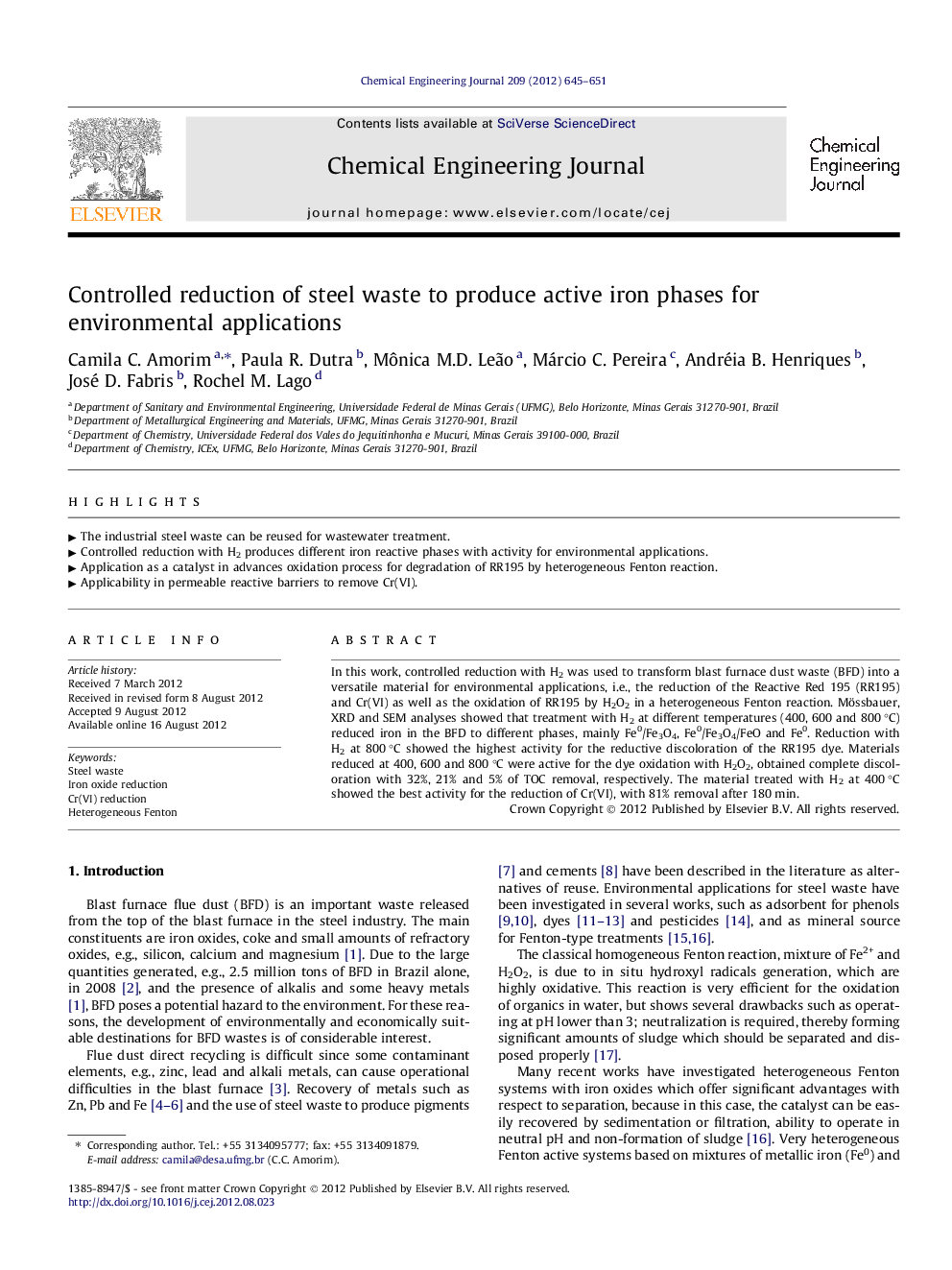| Article ID | Journal | Published Year | Pages | File Type |
|---|---|---|---|---|
| 149234 | Chemical Engineering Journal | 2012 | 7 Pages |
In this work, controlled reduction with H2 was used to transform blast furnace dust waste (BFD) into a versatile material for environmental applications, i.e., the reduction of the Reactive Red 195 (RR195) and Cr(VI) as well as the oxidation of RR195 by H2O2 in a heterogeneous Fenton reaction. Mössbauer, XRD and SEM analyses showed that treatment with H2 at different temperatures (400, 600 and 800 °C) reduced iron in the BFD to different phases, mainly Fe0/Fe3O4, Fe0/Fe3O4/FeO and Fe0. Reduction with H2 at 800 °C showed the highest activity for the reductive discoloration of the RR195 dye. Materials reduced at 400, 600 and 800 °C were active for the dye oxidation with H2O2, obtained complete discoloration with 32%, 21% and 5% of TOC removal, respectively. The material treated with H2 at 400 °C showed the best activity for the reduction of Cr(VI), with 81% removal after 180 min.
► The industrial steel waste can be reused for wastewater treatment. ► Controlled reduction with H2 produces different iron reactive phases with activity for environmental applications. ► Application as a catalyst in advances oxidation process for degradation of RR195 by heterogeneous Fenton reaction. ► Applicability in permeable reactive barriers to remove Cr(VI).
